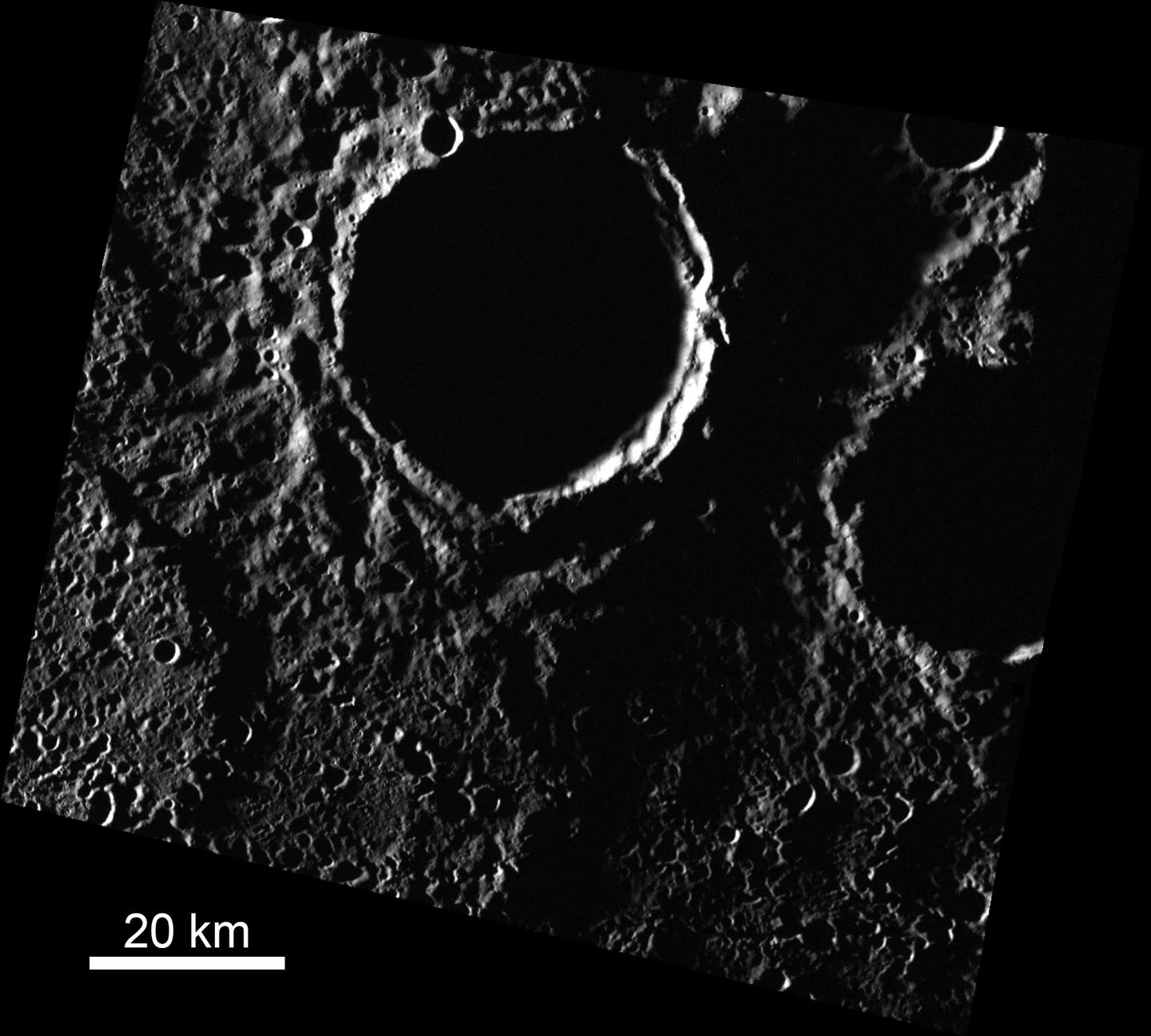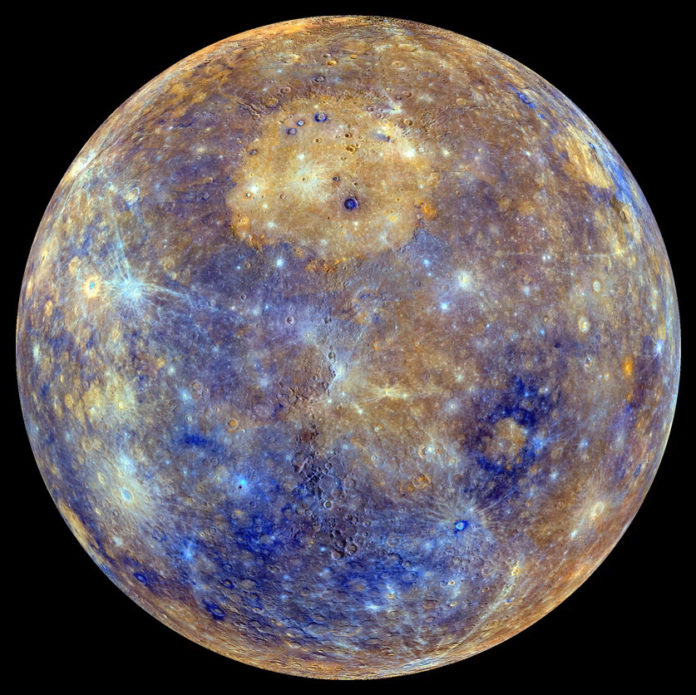When most people think about Mercury, they tend to think about the scorching hot surface of the planet. However, a recent study led by Brown University researchers suggests that Mercury’s poles are much icier than scientists first realized. The study revealed three new craters harboring large surface ice deposits located near the north pole of Mercury. As well as those, researchers also found smaller scale deposits scattered among and inside craters on Mercury’s north pole.
Ariel Deutsch is the lead author of the study and a Ph.D. candidate at Brown, and she says, “The assumption has been that the surface ice on Mercury exists predominantly in large craters, but we show evidence for these smaller-scale deposits as well. Adding these small-scale deposits to the large deposits within craters adds significantly to the surface ice inventory on Mercury.” Scientists first came to believe that Mercury had frozen water back in the 1990’s when highly reflective regions were detected within various craters near the planet’s poles.

There’s little sunlight that reaches Mercury as the axis doesn’t have much tilt. This is one reason why the temperatures have been calculated to be low enough for ice to form. The researchers’ prediction was boosted in 2011 when NASA’s MESSENGER probe detected neutron signals from Mercury’s north pole that was indicating the presence of water ice.
As part of the new study, Deutsch and Gregory Neumann from NASA’s Goddard Space Flight Center teamed up to delve deeper into the data MESSENGER retrieved, specifically any readings relating to the spacecraft’s laser altimeter. Using Neumann’s expertise of the instruments used for the MESSENGER mission, the team were able to calibrate the altimeter’s reflectance signal and detect the high reflectance deposits indicting ice on the pole.
This find is a significant discovery for the team. “We suggest that this enhanced reflectance signature is driven by small-scale patches of ice that are spread throughout this terrain,” says Deutsch. To gain further proof that these small-scale deposits exist, Deutsch and colleagues scanned through patches of the altimeter data to find those that were smaller than the big-crater deposits, but still big enough to determine with the altimeter. Using this technique, they found four. “These four were just the ones we could resolve with the MESSENGER instruments,” Deutsch confirmed. “We think there are probably many, many more of these, ranging in sizes from a kilometer down to a few centimeters.”
Learning about these small-scale deposits could increase the ice inventory quite significantly on Mercury. The only other thing that remains unanswered now is how this ice got to be on Mercury in the first place. So far, the most popular hypothesis is that it was delivered by a water-rich asteroid or comet collisions. Another hypothesis is that perhaps hydrogen was implanted in the solar surface and later mixed with oxygen to form water. “This study opens our eyes to new places to look for evidence of water, and suggests there’s a whole lot more of it on Mercury than we thought,” says Jim Head, co-author of the study.
More News to Read
- Researchers Discover the Human Body’s Internal Clock
- Astronomers Detect Titanium Oxide for the First Time in Exoplanet WASP-19b
- Virtual Reality Travel Experiences That Will Blow Your Mind
- Astronomers Discover Fluctuations in Brightness of Unique Binary Star System
- Dark Energy Debate Takes Another Turn Thanks to New Supernova Analysis

